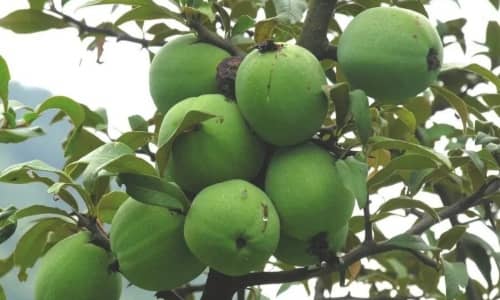Bite into a slice of medicinal quince, and its sharp sourness hits you instantly—but that’s where its magic lies. Unlike the sweet tropical papaya, this wrinkled ancient fruit has been revered in Chinese medicine for centuries. Do you know what it can really do?

Table of Contents
- Origin and Regional Quality
- Nature, Taste & Meridians
- Key Functions in TCM
- Edible Forms & Nutritional Insights
- Contraindications and Precautions
1. Origin and Regional Quality
Medicinal quince refers to the dried ripe fruit of Chaenomeles speciosa (a Rosaceae plant). It’s harvested in late summer and processed via sun-drying and slicing.
🌿 Premium source:
- Xuancheng in Anhui produces the finest variety
- Known as “Tribute Quince” due to its history as a royal offering
- Distinct sour aroma, rich color, and dense texture
2. Nature, Taste & Meridians
📌 Taste: Sour
📌 Nature: Warm
📌 Meridians: Liver and Spleen
Its warmth unblocks the meridians, while its sourness nourishes the liver. Ideal for relieving muscle cramps, dampness, and digestive discomfort.
3. Key Functions in TCM
✅ Relaxes tendons and muscles: Great for cramps, stiffness, and numb limbs
✅ Dispels wind-damp: Treats chronic joint pain and swelling
✅ Harmonizes the stomach: Useful for bloating, diarrhea, and poor appetite
✅ Activates blood circulation: Helps ease pain caused by blood stasis
📖 Compendium of Materia Medica states:
“Its sourness enters the liver, warmth soothes the tendons—excellent for treating damp obstruction.”
4. Edible Forms & Nutritional Insights
Medicinal quince can be boiled into tea or cooked in soups:
🍵 Often paired with red beans, coix seed, or angelica root
🍲 Added to pork or chicken soups for enhanced medicinal value
Modern studies confirm:
✅ Contains 1200 units of SOD per gram
✅ Includes 19 types of amino acids, alkaloids, and antioxidants
✅ Known for anti-inflammatory, anti-aging, and immunity-boosting properties
5. Contraindications and Precautions
⚠️ Not for everyone:
🚫 Avoid if you have high stomach acid or internal heat
🚫 Pregnant women and children should not use without professional advice
🚫 Do not confuse with tropical papaya—they are not interchangeable in medicinal use
✅ Conclusion
Though rough on the outside and sharp on the tongue, medicinal quince is a time-honored remedy with deep healing power. From ancient formulas to modern labs, it’s earned its title as “plant gold.” Like life’s sour moments, its gifts are often hidden in discomfort—waiting to be savored with wisdom and patience.